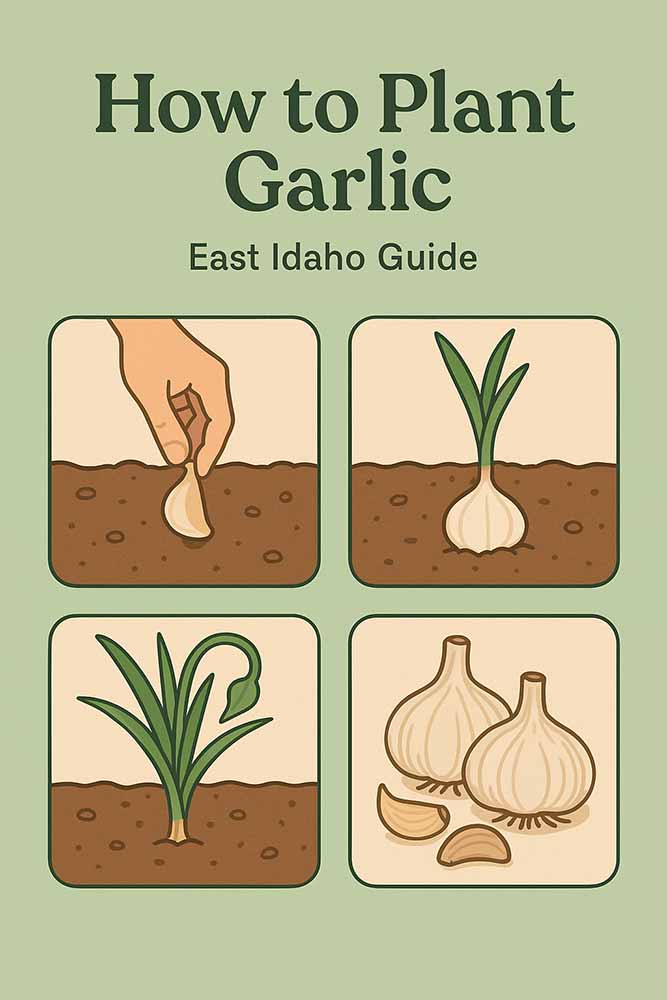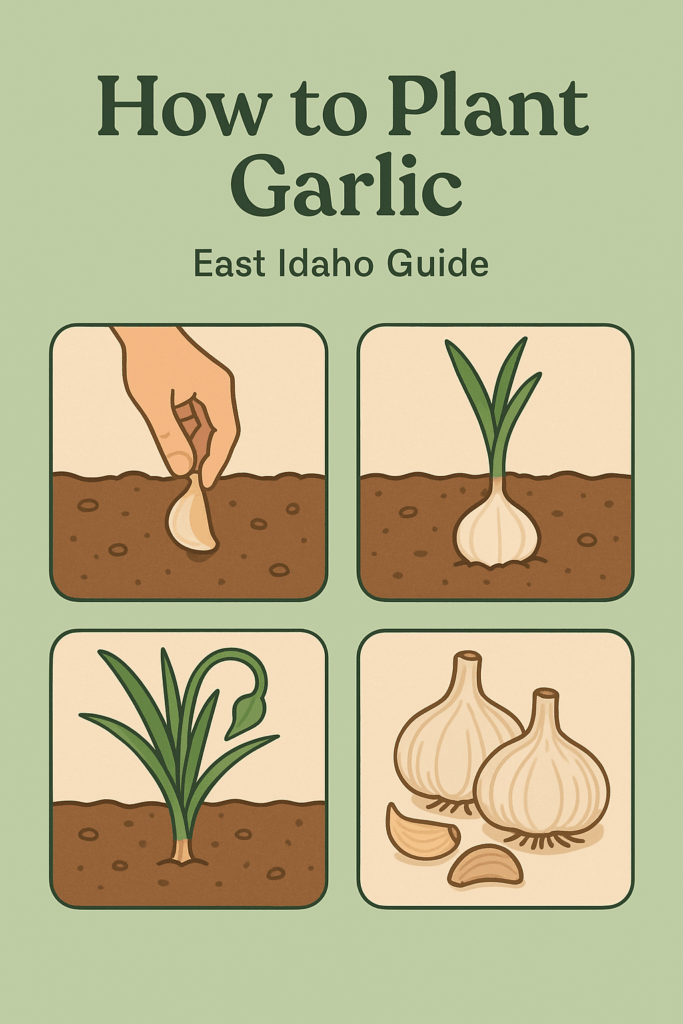Growing Garlic: Planting Guide for East Idaho
Growing Garlic: Planting Guide for East Idaho
Garlic is one of the easiest, most rewarding crops you can grow in Eastern Idaho. Plant it once in fall, mulch it for winter, then harvest big, flavorful bulbs next summer. Here’s exactly how to do it—step by step.


Best Time to Plant
- Fall window: late September to mid-October, about 4–6 weeks before the ground freezes.
- Planting in fall lets cloves root in before winter, giving you larger bulbs at harvest.
Choose the Right Type
- Hardneck Garlic (best for cold climates): Generally a more spicy flavor, although there are some mild varieties. Produces edible garlic scapes in late spring. Great varieties include ‘Music’ and ‘Chesnok Red’.
- Softneck Garlic: Varieties such as ‘Early Italian’ generally have a milder flavor and stores longer.
- Tip: Plant seed garlic, not grocery store garlic (often treated and not adapted here). For best selection, buy your seed early September and store them until you’re ready to plant.
Site & Soil Prep
- Sun: Full sun (6–8+ hours/day).
- Soil: Loose, well-drained, pH 6.0–7.5. Raised beds are perfect.
- Amend: Work in 2–3 inches of compost or Town & Country’s Soil Enhancer. For bigger bulbs, mix in a higher phosphorus bulb food (7-8-5) per label instructions.
Step-by-step Planting
- Break bulbs into individual cloves right before planting. Keep the papery skins on.
- Layout: Space cloves 6 inches apart in all directions (or rows 10–12″ apart).
- Plant depth: Set cloves pointy end up, cover so the top of the clove sits about 2 inches below soil (go 3″ if your bed is very light/loose).
- Water in to settle soil.
- Mulch: Cover with 3–6 inches of clean mulch or leaves. Mulch is your winter blanket and spring weed-block.
- Winter: Do nothing—mulch stays on.
- Spring: As shoots emerge, pull mulch back slightly from stems but leave most in place to suppress weeds and retain moisture.
- Feed: When plants are 3–4″ tall, side-dress with a nitrogen source (e.g., alfalfa or blood meal or Fruit & Flower Food) per label instructions. Repeat lightly once more 3–4 weeks later.
Keep evenly moist in spring/early summer (about 1 inch/week, rain included).
- Stop heavy watering 2–3 weeks before harvest to help bulbs cure in-ground.
- In late spring, hardnecks send up curly “Scapes”
- Snap them off when they make a full curl to push energy into bigger bulbs. (Bonus: Scapes are delicious—grill, pesto, stir-fry!)
- Typically, mid-July to early August here, depending on weather and variety
- Harvest when ~40-60% of the leaves have turned brown, but before all leaves dry down to the ground
- Loosen soil with a fork—don’t yank by the tops.
- Brush off clumps of soil; don’t wash.
- Cure bulbs for 2–3 weeks in a shady, dry, airy spot (garage with a fan, shed, shaded porch). Hang in bundles or lay on racks—avoid direct sun.
- When skins are papery and necks tight, trim roots, cut tops to 1–2″, and store.
- Your Content Goes Here
- Hardneck: Best at 50–60°F, moderate humidity; stores 3–6 months.
- Softneck: Often stores 6–9+ months in a cool, dry place.
- Save your biggest, healthiest bulbs to replant next fall.
- Your Content Goes Here
- Rotate: Don’t plant garlic/onions/leeks in the same bed more than once every 3–4 years.
- Wet feet = trouble: Poor drainage leads to rot. Keep soil loose and never soggy.
- Weeds: Mulch is your best friend.
- Small bulbs? Usually from late planting, crowding, low fertility, or leaving Scapes on (hardneck).


